A man of many interests
William Shakespeare is revered around the world as the greatest playwright to have ever lived. But Shakespeare was much more than just a man of the theatre. He was also a celebrated poet, a family man and a hugely successful businessman.
As well as writing new plays, Shakespeare juggled other interests from his home in Stratford-upon-Avon, New Place. Based on what we know about him, and the history of this period, we have imagined what a typical day in his life was like in 1604.
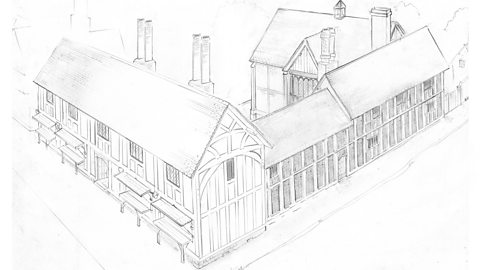
04.45
Shakespeare awakes
Shakespeare wakes up in one of the most impressive houses in Stratford-upon-Avon.
Tax records reveal that New Place had 10 fireplaces, which means it may have had as many as 30 rooms. Stratford, not London, was Shakespeare's base from 1597 onwards. Shakespeare was a literary commuter, travelling south when professional commitments required him to be there, but enjoying his fine Warwickshire home whenever he had the chance. When in the capital he rented. He did buy a house in London in 1613, but it is likely that he made the purchase purely as an investment.

05:00
Straight to work
In an age before electric or gas lighting, Shakespeare rises early to take advantage of natural light.
In 1604 he wrote a new piece set in the far-off land of Cyprus for his theatre company, The King's Men. The play was called Othello after its main character, a general in the Venetian army. Shakespeare took his inspiration from a book called Gli Hecatommithi by Geraldi Cinthio, which also told the story of a Moorish military officer. Much of Shakespeare's work was based on other stories, meaning he would have needed a study with a large number of books to refer to when writing.
Simon Russell Beale reading from Gli Hecatommithi. Clip from Shakespeare Stories: Othello (Radio 4).

06:00
Bathroom trip
When Shakespeare needed the toilet, he used facilities that were pretty rudimentary by today's standards.
Most people got by with a pretty simple method – going to the toilet in a chamber pot. But wealthy households like New Place had a more classy option – the close stool. This was an upholstered box with a pan inside that could be removed and emptied. For privacy, these could be kept in a dedicated 'stool room' or 'privy'.

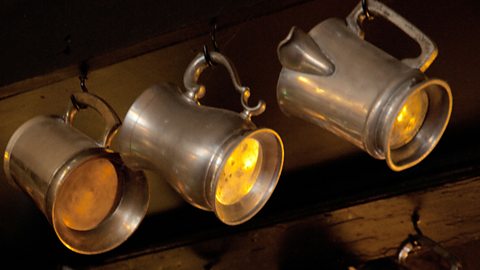
07:00
Breakfast time
Shakespeare takes a break from writing to enjoy a morning beer or two with his family.
That's not to say that Shakespeare, wife Anne or daughters Susanna and Judith, were heavy drinkers. It was commonplace in 17th Century England to drink beer instead of water. Without flushing toilets and proper sewer systems, water supplies could be contaminated by diseases like typhoid. Most people brewed a weak form of ale, known as 'small beer', as a safer alternative.

08:00
Weary walk
Shakespeare goes for a stroll around Stratford after finishing breakfast, with a route that takes him through the churchyard of Holy Trinity.
Coming this way took him past the grave of Hamnet Shakespeare. While it is impossible to know how real life events influenced his writing, some believe the emotional power of Hamlet's speeches is rooted in the grief Shakespeare felt following the death of his only son in 1596, aged just 10.
David Tennant's performance of Hamlet for the RSC was hailed by the critics. Clip from Hamlet (´óĎó´«Ă˝ Two).
09:00
Back to Othello
After his walk, Shakespeare returns to the task at hand, writing his new play Othello.
Although he based his play on Gli Hecatommithi, Othello was a complete reworking of the story. For example, Shakespeare decided to add a particularly dramatic climax to a scene where Othello and Desdemona argue, with Othello striking his wife to the floor.
Audiences gasp with horror when Othello strikes his wife. Clip from Othello (´óĎó´«Ă˝ Two).
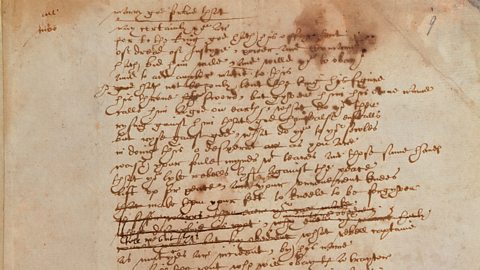
11:00
The hard work of writing
By this stage in the day William has been working for four hours. Given the equipment available in 1604 writing would have been a slow process.
The only implement available to him was a quill. This was made from a goose feather, with the end sharpened with a knife to form of nib that could be dipped into ink. The word 'penknife' comes from the tool that writers used to do this. Shakespeare produced a huge volume of work in his lifetime, leaving a legacy of 37 plays and 154 sonnets. This amounted to around 900,000 words that he had to commit to paper over 25 years.

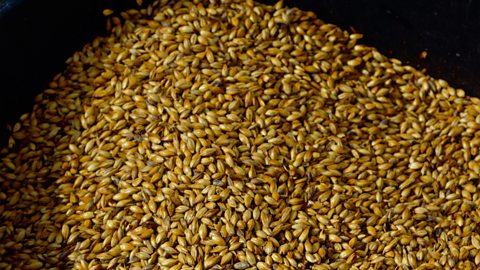
13:00
Lunch
While Shakespeare was hard at work on his latest play, other members of the household were busy preparing his lunch.
Shakespeare lived at a time when many foodstuffs would have been prepared at home, rather than bought, by his family and servants. Butter would have been made through the laborious process of churning – plunging a wooden pole up and down inside a barrel of milk. Ale would also have been made at home. Shakespeare kept large amounts of malt at New Place. This was also an extra source of income – keeping these stores allowed him to sell it on for a profit during times of shortages.

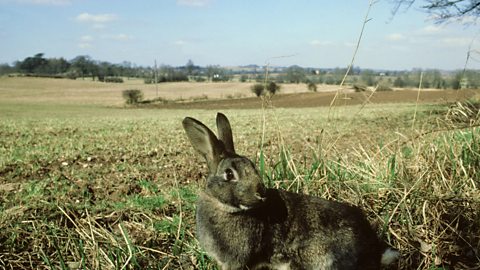
14:30
Farming
By 1604, Shakespeare was a major landowner. This afternoon he takes a break from writing and goes up to the farmland he owns to the north of the town.
He had significant responsibilities as a landlord and it was in his interest to look over the fields to check the crops were well-maintained. Shakespeare bought this land in 1602 for ÂŁ320. He then gave it to his daughter Susanna and her husband, physician John Hall, in 1607 as a wedding gift.


15:30
Floral inspiration
On his way back into town Shakespeare pauses by a cottage garden to take in the view of the flowers.
Although commonplace, oxlips were among his favourites, and he mentioned them in both A Midsummer Night's Dream and The Winter's Tale. But this was not the only flower he wrote about – Shakespeare made reference to more than 50 different types of flowers in his plays.

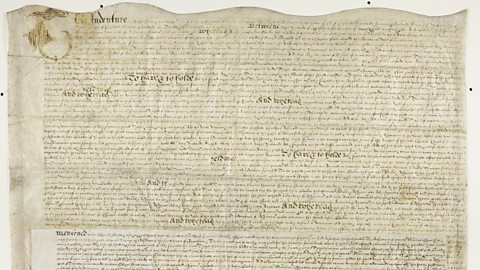
17:00
Business and beer
Shakespeare returns to town and heads straight to the pub to discuss buying a half share of tithes with his neighbour John Combe.
Tithes were a form of taxes on people who worked the land and generated an income for their owners. Once business matters had been discussed the men would have been able to enjoy the entertainment on offer – music and table top games with dice and cards as well as ball games like skittles.

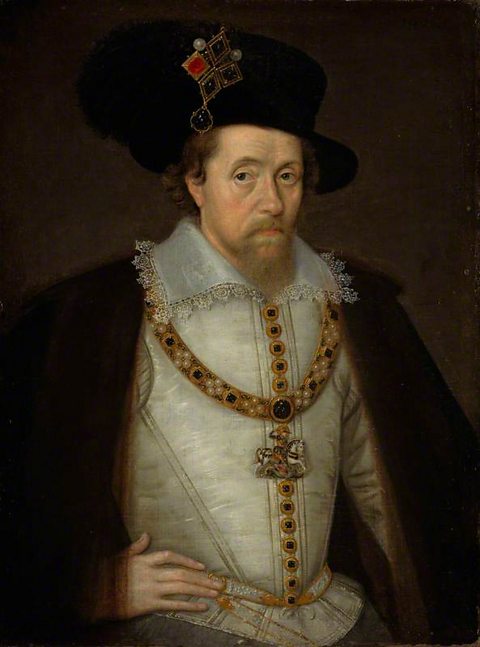
18:00
Dinner
He returns to New Place in time to have dinner with his wife and daughters, who have just returned from evening prayer.
Shakespeare was an extremely successful man, both in business and as a member of England's premier theatre company, The King's Men, which took its name from its patron, King James. This gave the Shakespeares a richer diet than most. They would have been able to afford meat and supplement this with fruit and vegetables from the garden. Some parts of the meal might seem strange to us today. In Shakespeare's day it was common to have edible flowers in a salad.

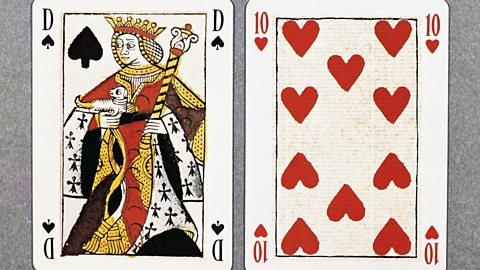
19:00
Evening entertainment
After dinner, the Shakespeare family gather together in the Hall to enjoy the warmth of the fires and play card games.
The Shakespeares would not have been alone in the Hall. The considerable size of New Place allowed plenty of space for visitors. Another family, the Greenes, lodged with them for a number of years.

22:00
Final verse
When the rest of the household retires to bed, William picks up his quill once again. But instead of a play, he begins a poem.
Shakespeare wrote 154 sonnets during his lifetime. Sonnets were extremely fashionable at the time. Many of his sonnets were only intended to be distributed among a small circle of literary friends. A complete collection was published during his lifetime, in 1609, but it is possible that this was done without approval.
Shakespeare's Sonnet 116 read by Finbar Lynch. Clip from Poetry Please (Radio 4).
Learn more about this topic:
William Shakespeare: The life and legacy of England’s bard. document
A timeline of Shakespeare's life. Much about the playwright is a mystery - Historians don’t know his date of birth, where he was educated or how he spent seven years of his life.

How did people really speak in Shakespearean England? document
A look at Shakespeare’s plays and how well they can be said to represent the Elizabethan language.

How can I learn to love Shakespeare? document
Russell T Davies and the cast of A Midsummer Nights Dream on the challenges of adapting Shakespeare and the value of letting the Bard into your life.
